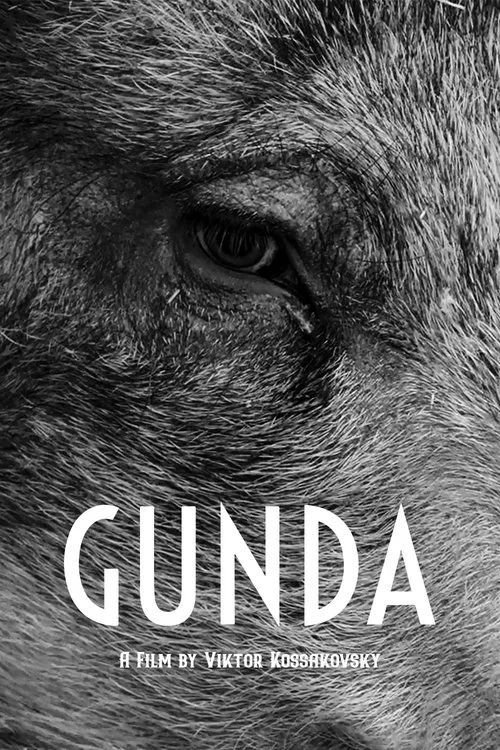Gunda

Plot
Gunda is a 2020 nature documentary film directed by Victor Kossakovsky, a Russian film director and screenwriter. The film offers a unique perspective on the natural world by focusing on the lives of a mother pig, Gunda, and her companions: a cow named Duroc, and a chicken with a missing leg. The on-screen narrative of the documentary primarily takes place in Norway, amidst the vast and breathtaking landscape of the country's rural areas. As the camera pans over the lush meadows and pastures, the viewer is initially introduced to Gunda, a robust and charismatic pig. Gunda, the eponymous subject of the film, is a devoted mother who tends to her newborn piglets with unwavering dedication and care. The piglets are adorable, vulnerable creatures that require their mother's constant attention and nourishment. The mother-child bond is beautifully portrayed in the film, as Gunda lavishes affection and attention on her young ones, teaching them essential skills and protecting them from potential predators. Gunda is portrayed as a fierce protector, a steadfast matriarch who commands respect from the surrounding animals. Her demeanor is authoritative, calm, and gentle, reflecting her role as a mother. Gunda moves through the landscape with a purpose, foraging for food, socializing with her companions, and caring for her offspring. Her presence is marked by a soothing and calming presence, a counterpoint to the turbulent events that unfold in the narrative. One of Gunda's closest companions is a cow named Duroc. Duroc is a majestic and tranquil creature, whose gentle lowing echoes through the landscape. Duroc and Gunda engage in a series of poignant interactions, characterized by a deep understanding and a shared history. The camera captures the nuanced body language and vocal cues between the two animals, conveying a sense of mutual appreciation and respect. Their friendship is a testament to the deep bonds that form between individuals in the natural world, even across species. The third main character in the narrative is a one-legged chicken. The chicken, though a minor character, plays a crucial role in the film, offering a unique perspective on the natural world. Despite its imperfection, the chicken is a resilient and resourceful individual, adapting to its surroundings and interacting with the other animals in the narrative. The film's director chooses to focus on the chicken as a symbol of the power of nature, where creatures are not defined by their limitations, but by their capacity to thrive in the face of adversity. Throughout the film, Kossakovsky employs his camera to capture the intricate details of the natural world. The cinematography is breathtaking, conveying the beauty and majesty of the Norwegian landscape. The camera follows Gunda and her companions as they roam through the meadows, woods, and pastures, offering a glimpse into their daily lives and interactions. The visual narrative is complemented by a haunting and melancholic soundtrack, which underscores the poignancy and vulnerability of the animals. One of the striking aspects of the film is its refusal to anthropomorphize or sentimentalize the natural world. Kossakovsky presents the animals as they are, without imposing human emotions or motivations. Instead, the film focuses on the raw power and simplicity of nature, where creatures interact with their environment and each other in a complex web of relationships. This approach creates a sense of disorientation, as the viewer is forced to confront the inherent complexity and brutality of the natural world. In one of the most poignant moments in the film, Gunda and her piglets are separated from Duroc, leaving them vulnerable to predators and harsh weather conditions. The subsequent scenes are a heart-wrenching portrayal of survival, as Gunda and her piglets fight to stay alive. The film's use of time and space creates a sense of unease, as the viewer is forced to confront the fragility of life and the dangers that lurk in the natural world. Ultimately, Gunda is a film about the power of nature, where creatures are not defined by their individual stories, but by their collective presence and agency. The film's director, Victor Kossakovsky, presents a meditation on the natural world, one that is characterized by its simplicity, its raw power, and its beauty.
Reviews
Recommendations




